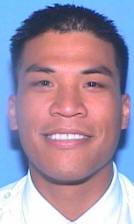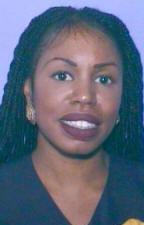|
|||||||||||
|
|
|
|||
|
By |
||||
 |
July 15, 2010 - The National Transportation Safety Board has determined that the probable cause of the 2008 Continental Airlines flight 1404 runway excursion accident was the captain's cessation of rudder input, which was needed to maintain directional control of the airplane, about 4 seconds before the aircraft departed the runway, when the airplane encountered a strong and gusty crosswind that exceeded the captain's training and experience. Contributing to the accident was the air traffic control system that did not require or facilitate the dissemination of key available wind information to air traffic controllers and pilots, and inadequate cross wind training in the airline industry due to deficient simulator wind gust modeling.
On December 20,
2008, Continental Airlines flight 1404 (registration N18611) veered off
the left side of runway 34R during a takeoff from |
|||
|
|
||||
|
There was a
post-crash fire. All 110 passengers and 5 crewmembers evacuated the
airplane immediately after it came to rest. The captain and five
passengers were seriously injured. At the time of the accident,
mountain wave and downsloping wind conditions existed in the
"This aircraft happened to be in the direct path of a perfect storm of circumstances that resulted in an unexpected excursion in an airport with one of the most sophisticated wind sensing systems in the country," said NTSB Chairman Deborah A.P. Hersman. "It is critical that pilots receive training to operate aircraft when high wind conditions and significant gusts are present, and that sufficient airport-specific wind information be provided to ATC controllers and pilots as well." |
||||
Recommendations To The Federal Aviation Administration: 1. Conduct research into and document the effects of mountain wave and downslope conditions at airports, such as Denver International Airport, that are located downwind of mountainous terrain (including, for example, airports in or near Colorado Springs, Colorado; Anchorage, Alaska; Salt Lake City, Utah; and Reno, Nevada), identify potential mountain-wave-related hazards to ground operations at those airports, and disseminate the results to pilots and airport air traffic control personnel to allow for more informed runway selection decisions.
2. Archive all
low-level windshear alert system (LLWAS) data obtained from 3. Modify Federal Aviation Administration Order 7110.65 to require air traffic controllers at airports with multiple sources of wind information to provide pilots with the maximum wind component, including gusts, that the flight could encounter. 4. Review the required documentation for all low-level windshear alert system (LLWAS)-equipped air traffic control towers to ensure that a letter to airmen has been published and is easily accessible describing the location and designation of the remote sensors, the capabilities and limitations of the system, and the availability of current LLWAS remote sensor wind information on the request of a pilot, in compliance with Federal Aviation Administration Order 7210.3. 5. Require air traffic control towers to locally develop and implement written runway selection programs that proactively consider current and developing wind conditions and include clearly defined crosswind components, including wind gusts, when considering operational advantage with respect to runway selection. 6. Gather data on surface winds at a sample of major U.S. airports (including Denver International Airport) when high wind conditions and significant gusts are present and use these data to develop realistic, gusty crosswind profiles for use in pilot simulator training programs. 7. Require 14 Code of Federal Regulations Part 121, 135, and 91K operators to incorporate the realistic, gusty crosswind profiles developed as a result of Safety Recommendation into their pilot simulator training programs. 8. Once realistic, gusty crosswind profiles as asked for in Safety Recommendation are developed, develop a standard methodology, including pilot-in-the-loop testing, for transport-category airplane manufacturers to establish empirically-based, type-specific maximum-gusting-crosswind limitations for transport category airplanes that account for wind gusts. 9. Once a methodology as asked for in Safety Recommendation has been developed, require manufacturers of transport-category airplanes to develop type-specific, maximum-crosswind takeoff limitations that account for wind gusts. 10. Until the actions described in Safety Recommendation are accomplished, require manufacturers of transport-category airplanes to provide operators with interim crosswind takeoff guidelines that account for wind gusts.
11. Work with 12. Require cockpit crew seats installed in newly manufactured airplanes that were type certificated before 1988 to meet the crashworthiness standards contained in 14 Code of Federal Regulations 25.562. 13. Require operators to perform periodic inspections on the Burns Aerospace model 2501-5 jumpseats for fatigue cracks within the jumpseat structure and replace the jumpseat if fatigue cracks are found. 14.Require that operators of transport-category airplanes that use galley latches or latch plates secured solely by adhesives that may degrade over time modify the latches to include mechanical fasteners. |
|||||||||
|
|
|||||||||
| Other News Stories |
|||||||||
| ?AvStop
Online Magazine
Contact
Us
Return To News
|
|||||||||
|





